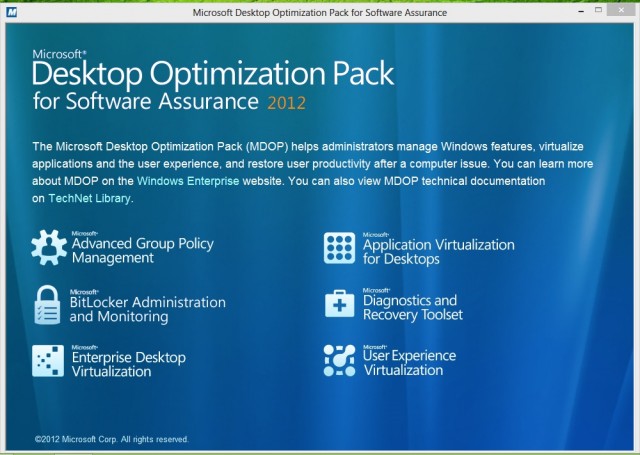
Microsoft Desktop Optimization Pack adds some new tools for Windows 8, and spruces up some others—but not all of them work with Microsoft's new OS.
Sean Gallagher
With Windows 8 out the door, Microsoft has released a new version of its enterprise desktop management pack. It includes a component that brings at least part of Windows 8's consumer functionality to Windows 7 and Windows 8 PCs as well as tablets on a business network. But some of the components of Microsoft Desktop Optimization Pack 2012 (MDOP) don't yet support Windows 8—making it harder for organizations that rely on its tools to incorporate the new version of Windows into their networks.
MDOP costs $48 per year per PC through Microsoft's volume purchasing program for enterprises, and it includes a number of new bumps in functionality. One of them is a new capability called User Experience Virtualization (UE-V) that synchronizes user's preferences, settings, and information about recent files across all the Windows 7 and Windows 8 systems (both physical and virtual) that they use.
Give me a home where the app settings roam
UE-V isn't really "virtualization" in the usual sense. It allows users to "roam" from system to system and have their system preferences, application settings, and links to recently-used files within applications follow them, giving them the same user environment from system to system. In many ways, UE-V is similar to the built-in synchronization capabilities of Windows 8, which allows users who log in with a Microsoft account to keep their settings consistent across multiple Windows 8 devices.
Read 8 remaining paragraphs | Comments
DIGITAL JUICE
No comments:
Post a Comment
Thank's!